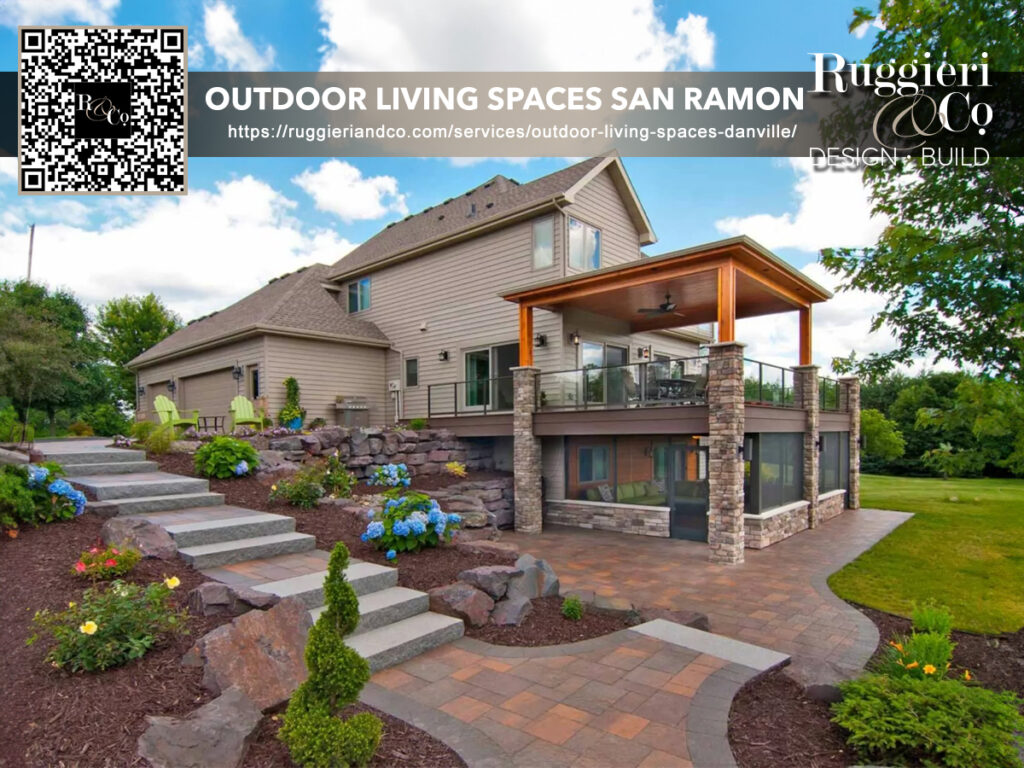If you’re looking to upgrade your San Ramon outdoor living spaces while also conserving water, then you’re in the right place. By exploring innovative water conservation techniques, you can save water without sacrificing style or comfort in your outdoor living area. With the right strategies and design choices, you can transform your outdoor space into a beautiful and eco-friendly oasis that exemplifies the best of outdoor living.
Key Takeaways:
- Using water-efficient landscaping is key to conserving water in your outdoor living space.
- Smart outdoor irrigation systems can help you monitor, control, and adjust water usage based on plant needs and weather conditions.
- Drought-resistant plants are an excellent choice for San Ramon’s climate and can add beauty to your outdoor design.
- Rainwater harvesting and greywater reuse can significantly reduce your dependence on traditional water sources while conserving water.
- Permeable paving and other water-saving technologies can contribute to a sustainable outdoor living space.
Water Efficient Landscaping
When it comes to creating a sustainable outdoor design, water-efficient landscaping is a crucial element. By minimizing water usage in your outdoor living space, you can contribute to environmental preservation and save on water costs. Follow these principles to maximize water efficiency in your landscaping:
Plant selection
Choose plants that are native to your area, drought-resistant, and suitable for your outdoor living conditions. These plants require less water and maintenance, and can still add beauty to your landscape. Use mulch to retain moisture and protect plants from extreme temperatures.
Irrigation strategies
Consider using drip irrigation, which minimizes water waste by delivering water directly to the roots of the plants. Use a rain sensor to prevent watering your landscape during rainy or humid conditions. Adjust your watering schedule based on the current season and weather conditions.
Hardscape design
Integrate permeable paving materials, such as permeable concrete or pavers, to allow water to penetrate the ground and replenish the soil. This not only reduces runoff and erosion but also allows the soil to absorb water more efficiently. Your landscape design can be creative and sustainable at the same time.
By incorporating these strategies and techniques in your outdoor living space, you can create a water-efficient landscape that promotes sustainability and environmental responsibility.
Smart Outdoor Irrigation
Watering your outdoor living space can be one of the most significant contributors to water use. Smart outdoor irrigation systems not only make watering more convenient, but they can also help you save water and reduce your water bill.
By using advanced technologies such as weather-based controllers, soil moisture sensors, and water flow sensors, smart irrigation systems can adjust your watering schedule based on weather conditions and plant needs. This means you can avoid overwatering, which not only wastes water but can also harm your plants.
Smart outdoor irrigation can also be controlled from your smartphone or tablet, making it easy to manage your watering schedule on the go. This can help you save time, reduce your water usage, and promote sustainable outdoor living.
Benefits of Smart Outdoor Irrigations:
| BENEFITS | DESCRIPTION |
|---|---|
| Water savings | Smart irrigation systems can reduce your water usage by up to 50% by avoiding overwatering and adjusting watering schedules based on plant needs and weather conditions. |
| Convenient | You can easily manage your watering schedule and system from your smartphone or tablet, making it simple and convenient to save water. |
| Sustainable | By using water more efficiently, you can help to preserve this precious resource for future generations. |
By incorporating smart outdoor irrigation into your outdoor living space, you can achieve a beautiful, sustainable landscape while reducing your water usage and lowering your water bill.
Drought-Resistant Plants
Water is a precious resource, especially in drought-prone areas like San Ramon. Finding ways to conserve water while maintaining a beautiful outdoor living space can be challenging. However, selecting drought-resistant plants is an excellent way to achieve both objectives.
Drought-resistant plants are those that have evolved to survive in arid conditions and can thrive on minimal watering. These plants have unique features that allow them to retain moisture and reduce water loss through transpiration. Incorporating these plants into your outdoor design can significantly reduce water usage and create a sustainable landscape.
Some of the most popular drought-resistant plants that can grow well in San Ramon include:
| Plant Name | Water Requirements | Special Features |
|---|---|---|
| Agave | Low | Leaves retain moisture, low maintenance |
| Lavender | Medium | Drought-tolerant, fragrant |
| California Poppy | Low | Drought-tolerant, vibrant color |
| Yarrow | Low | Drought-tolerant, attracts pollinators |
When selecting drought-resistant plants for your outdoor living space, it is important to consider factors such as sun exposure, soil type, and temperature. You can consult with a local landscaping professional to help you choose plants that are suitable for your specific location.
Incorporating drought-resistant plants into your outdoor design can also provide numerous benefits beyond water conservation. These plants can attract pollinators, improve soil health, and offer unique textures and colors to enhance your landscape.

Rainwater Harvesting
Did you know that rainwater harvesting can significantly reduce your outdoor water usage by up to 40%? Harvesting rainwater is an innovative water conservation technique that can help you collect and store rainwater for later use in your outdoor living space. This not only helps you save water and reduce your reliance on traditional water sources but also contributes to a sustainable outdoor design.
You can implement rainwater harvesting in your backyard by installing a rain barrel or cistern, which collects rainwater from your roof, gutters, or downspouts. The collected water can then be used for various purposes, such as watering plants, washing outdoor furniture, or even refilling your pool.
Other than rain barrels and cisterns, there are other rainwater collection and storage methods you can use depending on your outdoor space and requirements. These include underground storage tanks, dry wells, green roofs, and rain gardens.
The Benefits of Rainwater Harvesting
- Reduces outdoor water usage and water bills
- Decreases reliance on traditional water sources, such as tap water and groundwater
- Improves plant growth and health with natural, untreated water
- Prevents stormwater runoff and erosion
- Contributes to a sustainable and eco-friendly outdoor living space
Greywater Reuse
Water is a precious resource, and innovative water conservation techniques like greywater reuse can help you save water in your outdoor living space. Greywater consists of wastewater from your home, excluding water from toilets, which can be treated and utilized for irrigating your plants and landscape.
To make the most of greywater, you need to identify and choose suitable greywater sources, such as your bathroom sink, shower drain, or washing machine. Once you have collected the greywater, you need to treat it using filtration, settling, or other appropriate methods before using it for irrigation.
Greywater irrigation can be accomplished using sub-surface or drip irrigation techniques, which can reduce water use and minimize runoff. By incorporating greywater reuse into your outdoor living space, you can not only save water but also promote environmental sustainability.
Benefits of Greywater Reuse
Greywater reuse can help you:
- Save water and reduce your water bill
- Minimize the burden on municipal water treatment facilities
- Reduce reliance on traditional water sources
- Promote sustainable landscaping practices
Greywater Treatment Methods
There are different greywater treatment methods available, including:
| Treatment Method | Description |
|---|---|
| Biosand filtration | A natural filtration method that involves passing greywater through layers of sand and gravel to remove pollutants |
| Drip irrigation | A low-volume irrigation method that involves supplying water directly to the plant roots through a network of drip emitters |
| Constructed wetlands | A natural treatment method that involves using plants, microbes, and soil to remove pollutants from greywater |
Greywater Irrigation Techniques
Greywater can be utilized for irrigation using different techniques, such as:
- Sub-surface irrigation, where water is delivered below the soil surface
- Drip irrigation, where water is delivered slowly and precisely to the plant root zone
- Basin irrigation, where water is held in a depression or basin around the plant roots
By implementing greywater reuse in your outdoor living space, you can help conserve water and promote sustainability. Explore the suitable greywater sources, treatment methods, and irrigation techniques to make the most of this valuable resource.
Xeriscaping
Transforming your outdoor space into a sustainable oasis can be made possible with xeriscaping, a water-efficient landscaping technique that minimizes water use while maintaining a beautiful aesthetic. The name originates from the Greek word “xeros,” meaning “dry,” and “landscaping.” This method merges the elegant design with water-saving strategies to create a garden that can withstand drought and requires minimal maintenance.
The key principles of xeriscaping include:
- Planting native and drought-tolerant species that can survive on natural rainfall and require minimal irrigation;
- Reducing the lawn area and replacing it with alternative ground covers, such as gravel, rocks, or mulch;
- Grouping plants according to their water needs and sun exposure to maximize irrigation efficiency;
- Using efficient irrigation systems, such as drip irrigation and soaker hoses, to minimize water waste;
- Mulching garden beds to retain moisture, control weeds, and regulate soil temperature.
The benefits of xeriscaping extend beyond water conservation and resource efficiency. This landscaping style promotes biodiversity and supports the natural ecosystem by attracting beneficial insects, birds, and other wildlife. Additionally, it reduces the carbon footprint of your property by minimizing the use of gasoline-powered lawnmowers, trimmers, and other gardening equipment. Discover more about How to Choose Sustainable Materials for Your Kitchen Remodel.
Plant Selection Tips
When choosing plants for xeriscaping, consider those that are native to your region and adapted to the local climate. Common drought-resistant plants for San Ramon CA include:
| Plant Name | Type | Water Needs | Bloom Time |
|---|---|---|---|
| California Poppy | Perennial | Low | Spring/Summer |
| Lavender | Perennial | Low/Moderate | Summer |
| Manzanita | Shrub | Low/Moderate | Winter |
| Salvia | Perennial | Low/Moderate | Summer/Fall |
| Yarrow | Perennial | Low | Summer/Fall |
Experiment with diverse textures, shapes, and colors to create an engaging and visually appealing landscape that complements your home’s architecture.
With xeriscaping, you can create a sustainable outdoor space that not only saves water and reduces maintenance but also adds value to your property and contributes to a greener future.
Permeable Paving
When it comes to innovative water conservation techniques for your outdoor living area, permeable paving is an excellent option to consider. Unlike traditional concrete or asphalt surfaces, permeable pavement allows rainwater to seep through small gaps and pores, replenishing groundwater resources and reducing runoff. This means less water waste and environmental damage caused by stormwater runoff.
There are different types of permeable surfaces suitable for various applications, including permeable concrete, permeable pavers, and porous asphalt. Each option has its distinct benefits and drawbacks, so it’s important to consult with a trusted professional to determine which option is best for your specific needs.
Environmental Benefits of Permeable Paving
Permeable paving offers a range of environmental benefits, including:
- Reduced water runoff and erosion
- Infiltration and filtering of stormwater runoff
- Replenished groundwater resources
- Improved water quality
- Reduced heat island effect
By incorporating permeable paving in your outdoor living space, you can help minimize your impact on the environment while enhancing the beauty and functionality of your outdoor design.
Water-Saving Technologies
Are you searching for even more innovative ways to conserve water in your San Ramon outdoor living space? Look no further than advanced water-saving technologies, which can help you optimize your water usage, reduce waste, and enhance your outdoor design’s sustainability.
One such technology is weather-based controllers, which adjust watering schedules based on current weather patterns. This ensures that your plants receive the right amount of water, regardless of changing weather conditions. Additionally, moisture sensors that measure soil moisture levels can help you determine when your plants require watering, preventing overwatering or underwatering.
Other water-saving technologies include drip irrigation systems, which deliver water directly to plant roots, reducing water loss due to evaporation or runoff. Additionally, low-flow sprinklers can also help you save water by delivering a slow and steady stream of water directly to your plants, reducing the amount of water lost to wind or other factors.
By incorporating water-saving technologies into your outdoor design, you can create a sustainable and water-efficient space that requires less maintenance and is kinder to the environment. Whether you’re looking to start small or completely overhaul your outdoor living space, water-saving technologies are an excellent choice for maximizing your water savings.
Conclusion
Incorporating innovative water conservation techniques in your outdoor living space is essential to promote sustainability and environmental responsibility. By implementing the strategies explored in this article, you can transform your San Ramon outdoor space into a beautiful, water-efficient oasis.
Don’t underestimate the power of water conservation in your outdoor living space. You can choose from a variety of innovative techniques such as water-efficient landscaping, smart outdoor irrigation, drought-resistant plants, rainwater harvesting, greywater reuse, xeriscaping, permeable paving, and water-saving technologies to save water and reduce wastage.
Remember that every drop counts, and by implementing these techniques, you not only save water but also promote a sustainable future. So, start exploring the options and take the first step towards creating a beautiful and eco-friendly outdoor living space in San Ramon.
Ruggieri & Co Home Remodeling Danville is a premier home remodeling contractor in Blackhawk, Danville, CA, and the surrounding areas. We specialize in creating dream homes with the highest standards and a personal touch. With over 20 years of experience, we guarantee superior craftsmanship and attention to detail. We offer free quotes for our services and strive to provide our customers with the best service and value. From interior and exterior renovations to custom work, we are your go-to source for all home remodeling needs.
FAQ
How can water-efficient landscaping benefit my outdoor living space?
Water-efficient landscaping utilizes strategies and techniques that minimize water usage in outdoor areas, helping you create a sustainable and environmentally friendly outdoor design. By implementing these techniques, you can conserve water, reduce water bills, and create a beautiful outdoor space that thrives with minimal water resources.
What are some examples of smart outdoor irrigation systems?
Smart outdoor irrigation systems utilize advanced technologies to optimize water usage in outdoor living spaces. Examples include weather-based controllers that adjust irrigation schedules based on weather conditions, moisture sensors that detect soil moisture levels, and smartphone apps that allow remote monitoring and control of the irrigation system.
Which drought-resistant plants are suitable for the San Ramon climate?
San Ramon’s climate is characterized by hot summers and limited rainfall. Some suitable drought-resistant plants for this climate include lavender, rosemary, succulents, and native California plants like California poppy and California lilac. These plants have adapted to thrive in arid conditions and require minimal watering.
What are the benefits of rainwater harvesting in outdoor spaces?
Rainwater harvesting is a sustainable practice that involves collecting and storing rainwater for future use. It helps reduce reliance on traditional water sources, conserves water, and reduces stormwater runoff. The collected rainwater can be used for irrigation, reducing the need for potable water and contributing to water conservation in outdoor living spaces.
How can greywater be effectively utilized in outdoor living spaces?
Greywater, wastewater generated from activities such as laundry and dishwashing, can be treated and reused for irrigating outdoor spaces. Greywater can be diverted to a treatment system, such as a filtration or disinfection process before being used for irrigation. This helps reduce water consumption and promotes sustainability in outdoor design.
What are the key principles of xeriscaping?
Xeriscaping is a landscaping technique that focuses on creating water-efficient, low-maintenance landscapes. The key principles include proper planning and design, soil improvement and mulching, efficient irrigation systems, utilizing native and drought-tolerant plants, and appropriate maintenance practices. By following these principles, you can create a sustainable and beautiful outdoor space.
How does permeable paving contribute to water conservation?
Permeable paving is designed to allow water to infiltrate through the surface, reducing stormwater runoff and enabling groundwater recharge. This helps prevent water wastage and reduces strain on traditional drainage systems. Permeable paving can be used in driveways, pathways, and patio areas, offering both functional and aesthetic benefits while conserving water.
What are some water-saving technologies for outdoor living spaces?
Several water-saving technologies can be integrated into outdoor living spaces. These include weather-based controllers that adjust irrigation schedules based on real-time weather data, moisture sensors that measure soil moisture levels and adjust irrigation accordingly, drip irrigation systems that deliver water directly to plant roots, and smart irrigation apps that allow remote monitoring and control of irrigation systems.








